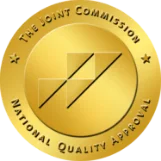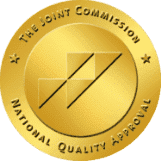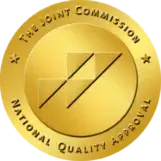An estimated 8 million people in the United States struggle with mental health issues related to Post-Traumatic Stress Disorder (PTSD). Because it impacts so many people, June is recognized as PTSD Awareness Month.
From combat veterans to survivors of physical or sexual abuse, and even those who have witnessed severe trauma, this condition can cause debilitating psychological symptoms that make day-to-day life incredibly painful.
Unfortunately, the majority of victims living with PTSD don’t get the treatment they deserve and need. This is why the National Center for PTSD, run by the U.S. Department of Veterans Affairs (VA) has designated June as PTSD Awareness Month.
In addition to PTSD Month, the U.S. Senate in 2010 officially authorized June 27 as National PTSD Awareness Day.
Fortunately, there is a wide range of resources to help those coping with issues of PTSD, along with similar mental health problems, such as depression or anxiety.
What are the Symptoms of Post-Traumatic Stress Disorder (PTSD)?
The lasting trauma of surviving or witnessing a horrific event, like incidents of domestic abuse, a terrible accident, the death of a family member or friend, as well many other life altering tragedies can leave behind intense emotional pain.
There are generally four different types of symptoms associated with PTSD. These include:
1. Changes in mood and thought patterns
2. Disturbing memories
3. Social avoidance
4. Changes in the way a person responds to issues both physically and emotionally
Because everyone is different, individuals coping with PTSD will experience these symptoms in different ways, but there are some signs to look for.
According to the Mayo Clinic, some of the symptoms of post-traumatic stress disorder can include:
- Depression and overwhelming feelings of hopelessness
- Anxiety
- Avoiding activities or places once enjoyed
- Feeling detached from friends and family
- Recurrent memories, nightmares or flashbacks to the traumatic event
- An unwillingness to discuss the event that caused the trauma
- Difficulty sleeping or insomnia
- Trouble concentrating
- Easily frightened or startled
- Heightened mental alertness and being on guard at all times
- Mood swings, from irritability to anger
- Aggressive behavior
- Intense guilt and shame
Another common PTSD symptom is self-destructive behavior. This can include things like driving dangerously fast, getting into physical altercations, or using drugs and alcohol to self-medicate.
Research suggests that about half of all people seeking treatment for addiction or substance abuse issues meet the diagnostic criteria for post-traumatic stress disorder.
Sadly, without treatment each condition – PTSD and addiction – will only make the symptoms of both become worse over time.
What is the Treatment for PTSD?
There are a number of effective therapy approaches to PTSD. Some of these may include medications to address the issues of depression or anxiety that often accompany the trauma and stress related to PTSD.
Effective treatment for PTSD often includes the following:
Cognitive Behavioral Therapy (CBT)
Counseling and approaches like Cognitive Behavioral Therapy (CBT) have shown to be incredibly successful in helping people move through their trauma.
CBT offers tools and techniques for overcoming automatic negative thought patterns that lead to irrational thinking and destructive behavior.
Brainspotting Therapy
Brainspotting Therapy for healing trauma is a newer treatment modality that has shown to be effective for locating the source of trauma in the brain and helps a person overcome the way they respond to the effects of prior traumatic events.
TMS Therapy (Transcranial Magnetic Stimulation)
TMS Therapy or Transcranial Magnetic Stimulation, is extremely beneficial for those who experience treatment-resistant depression and it has also shown to benefit people with PTSD.
This painless, noninvasive procedure uses short pulses of an electromagnetic field to stimulate the neurotransmitters in the prefrontal cortex, the area of the brain associated with mood.
Neurofeedback or Neurotherapy
Neurofeedback Therapy (Neurotherapy), sometimes referred to as EEG Biofeedback, is a treatment method used to create a sense of calm related to trauma.
Neurofeedback uses sensors connected to a computer to monitor brainwave patterns and is an interactive approach to train the brain to locate a calm state. It not only helps to reduce stress for those with PTSD, but in the long term, it can also be effective at preventing relapse.
EMDR (Eye Movement Desensitization and Reprocessing)
EMDR stands for “Eye Movement Desensitization and Reprocessing” and is a form of psychotherapy that is becoming popular as a way of treating PTSD symptoms.
Somatic Therapy
Somatic Therapy is a treatment method for recognizing and resolving trauma and the feeling of being trapped in a painful emotional state.
Dual Diagnosis Treatment
For those struggling with both PTSD and a substance use disorder together, it is vital that both issues be addressed simultaneously with a dual diagnosis treatment program.
Without treating the symptoms of both the addiction and mental health issues of trauma simultaneously, the chances of a full and successful recovery are unlikely.
Recognizing PTSD Awareness Month
The main goal of PTSD Awareness Month is to raise awareness that treatment for Post-Traumatic Stress Disorder is both available and effective for overcoming the symptoms and mental health issues of a previous traumatic event or experience.
Anyone can show his or her support by wearing a teal PTSD Ribbon during the month of June.
When posting PTSD related articles or resources to social media, use the hashtag #PTSDAwarenessMonth, to make it easy for others to find the information and share it with others.
If you or anyone you know is suffering from PTSD, it’s important to understand that treatment is available and nobody has to live their life in emotional turmoil from past traumatic events.






















